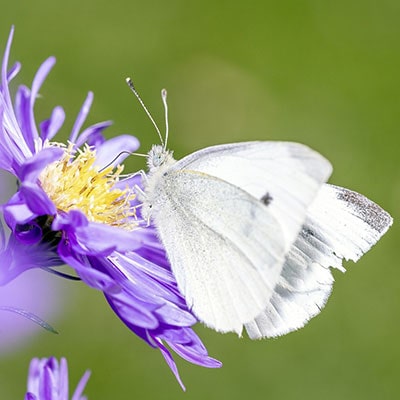
Wildlife gardening is a way for gardeners to put out a welcome sign for all the birds and animals who rely on our green spaces to survive. With dozens of species coming under pressure through losing their natural habitats, it has become ever more important for Britain’s gardeners to offer some sort of safe haven for our native wildlife. The RSPB discovered recently that 60 percent of animal and plant species have declined over the past 50 years. Of your garden to make it more appealing for wildlife. Many of the traditional features of gardens offer something for wildlife – think of sparrows drinking in a bird bath, squirrels finding the best way to the bird feeder or tadpoles in the garden pond. There are many more options though – take a look at our ultimate guide to wildlife gardening.
Planning a wildlife garden
The first thing to do is take a long look at your garden and see what its potential might be for wildlife. Is there an obvious patch which you can afford to leave untidy? Do you already have wildlife visiting your garden or living in it, and what sort of wildlife would you like to attract? This may depend on where you live, and the RSPB’s activity map[2] can provide you with some helpful hints about the sorts of birds and animals you might attract.
After mapping your garden, you should think about the sorts of plants and flowers that might bring the creatures you want into your garden. This is where you should think about the food chain[3]. Swallows and swifts eat ladybirds. Ladybirds eat aphids and aphids seem to eat every one of your flowers. So try not to exterminate every aphid you see – give the ladybirds a chance to find a new source of food. Set aside a patch which you do not use any insecticides on, and plant things that ladybirds like - high pollen plants such as dill, chives, fennel or marigolds.
Water is another crucial factor. If you can find room for a pond, it will bring a host of visitors – there’s a reason why safari lodges are built near water holes. The larger it is the better, because you will have room for a wider range of pond plants which will give you more chances of seeing dragonflies, newts or even otters, not to mention the dozens of bird species who will come to eat and drink.
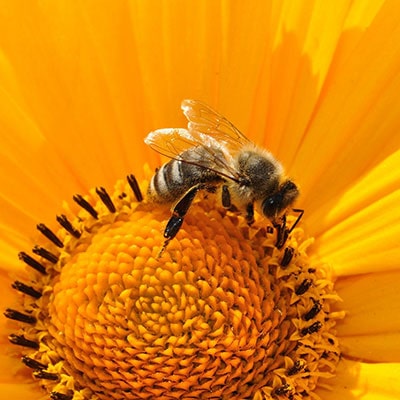
Caring for wildlife
It’s not enough to give wildlife the chance of a good meal. They also need to be safe from larger predators, with the chance to nest or hibernate, or shelter from the sun or the rain. If you have a dedicated patch of wildflowers or untidiness, so much the better, but there are alternatives.
Hedgerows and dense shrubs make good hiding places – you should allow for at least two spots for more nervous visitors to scurry between. Fences need the occasional hole so that hedgehogs can pass between gardens, while trees are ideal for birds looking to nest. You can of course use man-made habitats like bird tables and nesting boxes, and don’t be shy of allowing space around your shed to create some nooks and crannies for insects and creatures to hide in. A log pile or a compost heap is also a good option – hedgehogs love places like this in winter. These structures need to be maintained to make them appealing and safe, but be extra careful when clearing up – you never know if a pile of autumn leaves is hiding something vulnerable.
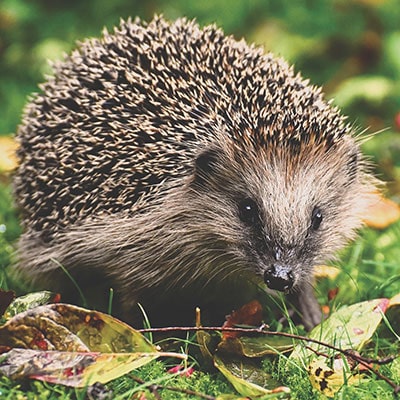
Keeping wildlife in your garden
Planting the right flowers is vital because it allows you to create a steady source of food for insects. Pollen and nectar are key, and many cultivars – plants that have been bred to create a particular effect – do not contain much of either substance.[5] Spring plants recommended by the RHS include Crocus and Mahonia, Sedum spectabile and ivy.
Look into companion planting, the practice of growing two species near each other so that they can pollinate each other or repel insects. Your tomatoes and fruit-bearing trees are helped by nasturtiums, which is a great way of distracting aphids and other insect predators[6] - put your bird box nearby. You can cordon off your insect trap with some marigolds, which even produce a natural pesticide in their roots.
Don’t forget that you can also leave food out for your visitors. Try throwing stale bread onto the grass instead of putting it in the bin. And don’t get too concerned about gaps in the fence – not everything can scale the fences and you need to allow wildlife to come and go as they want. The harder it is to get into your garden, the harder it is for you to receive guests.
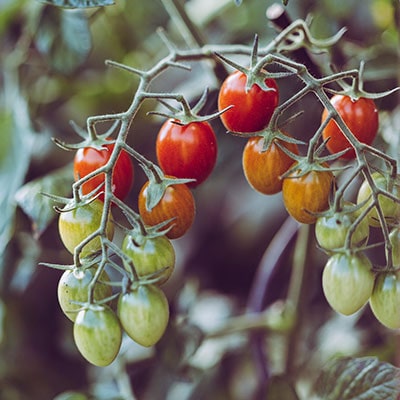
Getting children involved in wildlife gardening
Children love wildlife gardening and there’s plenty of ways to get them involved. To get them outside, make or buy a seasonal wildlife chart of animals that can be seen in the garden. If they can mark off the animals they’ve seen, they’ll soon be pestering you to get out and do some gardening.
They can help and plan the maintenance of wildlife environments. It can be their job to check on levels of food in the bird feeder or put seed on a bird table. If they have their own patch – a raised bed is often a good, self-contained option – then they can take responsibility. After identifying which wildlife-friendly plants you can grow, they can plant them and tend them under your supervision.
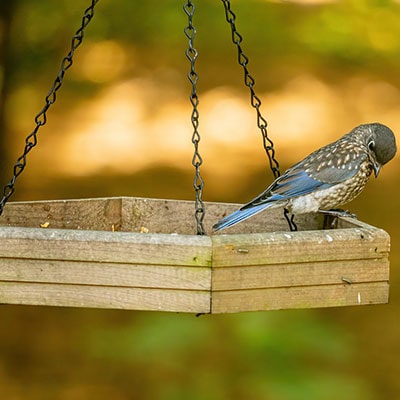
Top Tips
- Set aside a ‘messy’ patch
- Don’t use insecticide everywhere – try to contain the aphids in a particular area
- Companion planting is a great way to trap insects
- Make sure there is a good food supply all year round
- Don’t forget to create a water supply
- Animals need ways of getting into your garden so don’t turn your fences into a fortress
Sources
[2] https://www.rspb.org.uk/get-involved/activities/give-nature-a-home-in-your-garden/activity-map/
[3] https://ypte.org.uk/factsheets/wildlife-in-the-garden/the-garden-s-web-of-life
[5] https://www.rhs.org.uk/science/conservation-biodiversity/wildlife/encourage-wildlife-to-your-garden
[6] https://en.wikipedia.org/wiki/List_of_companion_plants#Flowers




